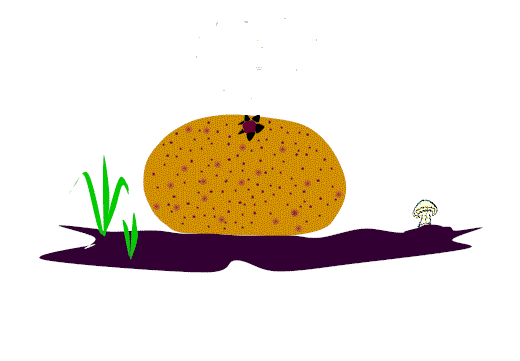Spore Dispersal
(continued)
| Pressure Puffballs and earthstars, employ a different method to disperse their spores. In these fungi, the spores are held in a mass inside a more or less spherical ball. There is a small pore in the wall on the top of the ball. Raindrops or animal contact placing pressure on the top of the ball will force the spores inside to puff out and be carried away by air currents. In earthstars, the outer wall splitting and opening into a star shape has the effect of raising the fruiting body higher above the leaf litter. There will be more aircurrents higher up which help the spores to disperse further.
|

| Cup fungi are the
spore shooters of the fungus world. Their spores develop inside a
sac-like structure known as an ascus. Fluid pressure builds up inside the ascus as the
spores mature, eventually reaching the point where the top of the ascus is blown off. The
spores are then ejected away from the fruiting body by the sudden release of pressure.
There are various different mechanisms for releasing the pressure at the top of the asci.
This may include such features as a lid or operculum which lifts when the pressure can no
longer be contained. Slight differences in the moisture content of the air, temperature, light and air currents will all affect spore release from the asci on a fruiting body. It may be possible to actually see spores puffing out from the asci and hear a small pop as they explode open. Spores may be shot out distances of up to 30 cm, which considering the microscopic size of the asci is a staggering feat. Once the spores have been shot out into the air surrounding the fruiting body, they will then be carried away by air currents. Another fungus which employs pressure to disperse its spores is called Pilobolus. For a description of spore dispersal in this fungus, click here.
Ink Caps use a quite different method to disperse their spores. They are gill fungi in which the gills break down as they mature. This results in a dripping black inky fluid containing the spores. At one time this fluid was used as ink, giving these fungi their common name. Bird's Nest fungi produce fruiting bodies which resemble a bird's nest. These are hollow structures containing small hard packets of spores called peridioles. Rain drops in heavy storms splash into the 'nest' structure ejecting the peridioles some distance from the fruiting body. |
